Hyundai’s factory of the future employs robot dogs, harvests vegetables

SINGAPORE – I remember the first time I saw a Boston Dynamic Spot robot on the internet. The four-legged yellow robot looked not unlike a dog and definitely reminded me of the “Metalhead” episode from Black Mirror.
When I see one in real life at the Hyundai Motor Group Innovation Center Singapore (HMGICS), my first thought is to be terrified. My second thought is, “Awww … it’s actually kind of cute.” My third thought is, “Wait – is this robot dog helping build a car?”
It’s a bot!
The HMGICS is an experimental factory located in the Jurong Innovation District in Singapore. The seven-story, 86,900- square-meter facility boasts more than 200 robots performing more than half of the work, producing the Ioniq 5 for the Singapore market and the Ioniq 5 robotaxi for us here in the United States. The Ioniq 6 should come online next year.
However, there is no “line” here like in a traditional factory. Instead, everything is “cell” based and autonomy rules the day. On my tour I encounter autonomous pallet robots transporting parts and components to various cells. They are smart enough to give my group the right of way, but it’s still a little unnerving, like I’m walking in the middle of the street and not in a sparkling clean factory. Some pallets can even carry a partially assembled car from one cell to another, stopping in the exact place for the assembly robots to do their job.
Here is where I get distracted and stop listening to my guide. Instead, I’m watching a robotic arm install a dashboard into an Ioniq 5. There is a robo-pallet of bolts to the side, and the arm precisely picks one up, moves to the install location, screws it in and goes back for the next bolt. It all happens in about three seconds. I bet these things never lose their 10-millimeter socket.
However, some robots don’t complete the entire task. After the dash is installed, I watch a robot grab a passenger seat and place it into the front of an Ioniq 5. Then the arm swings off to the side, drops off its attachment – or hand as the case may be – and swaps it for a different one. It goes on to drop in a windshield wiper motor. However, the actual bolting in is left for humans to do.
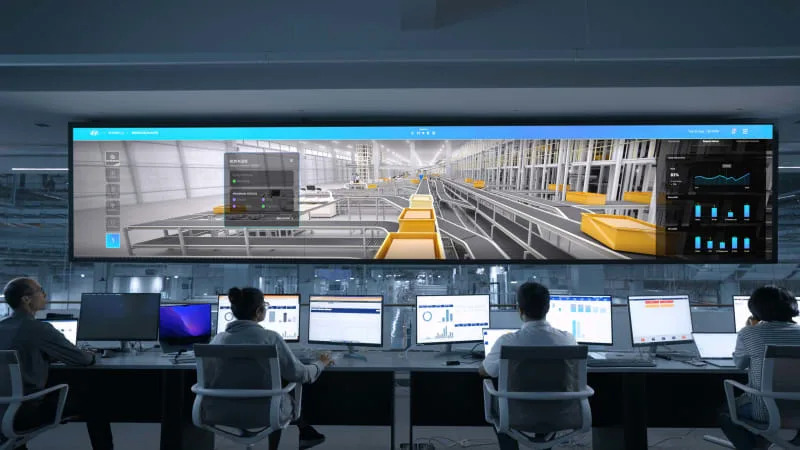
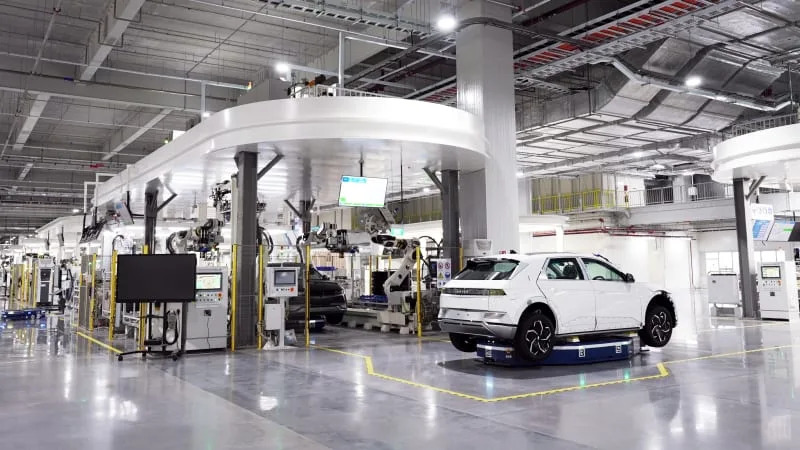
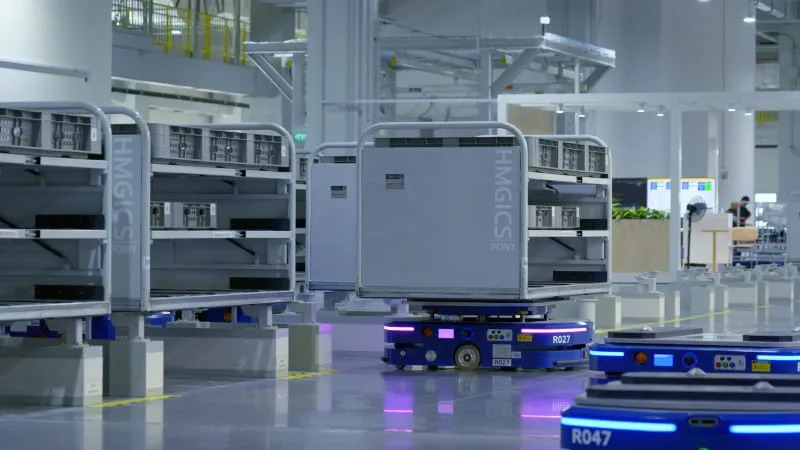
Humans and robots, working in harmony
Yes, there are some 270 humans that work at HMGICS. Some are engineers working in robotics or AI, but many are helping out in the cells, working with the robots to put cars together. Each worker in a cell has about 40 tasks to do, and I’m fascinated by the wearable seat one gal is wearing as she puts together a door. This lightweight contraption allows her to sit wherever she needs to; pushing around a roller chair not needed. I need this in my own garage.
I am also jealous of the smart glasses another worker is wearing. This wearable tech projects the instructions for a particular task into his field of vision, minimizing errors and standardizing the workflow. As someone who constantly has to refer from a YouTube video to my project and back to the video again, these fancy-pants glasses would be my jam.
Which brings me back to the Spot robot. A gentleman is working underneath a car – he wears a support for his arm to help lift it throughout the repetitive day – and Spot is hanging out next to him. Once the tech finishes a task, Spot comes over and takes a picture. It does this by opening what is clearly supposed to be its mouth and aiming the embedded camera at the section of work just finished. Why the camera can’t be the damn thing’s eyes I don’t know, but I’ve gone back to my initial impression – Spot is creepy as hell.
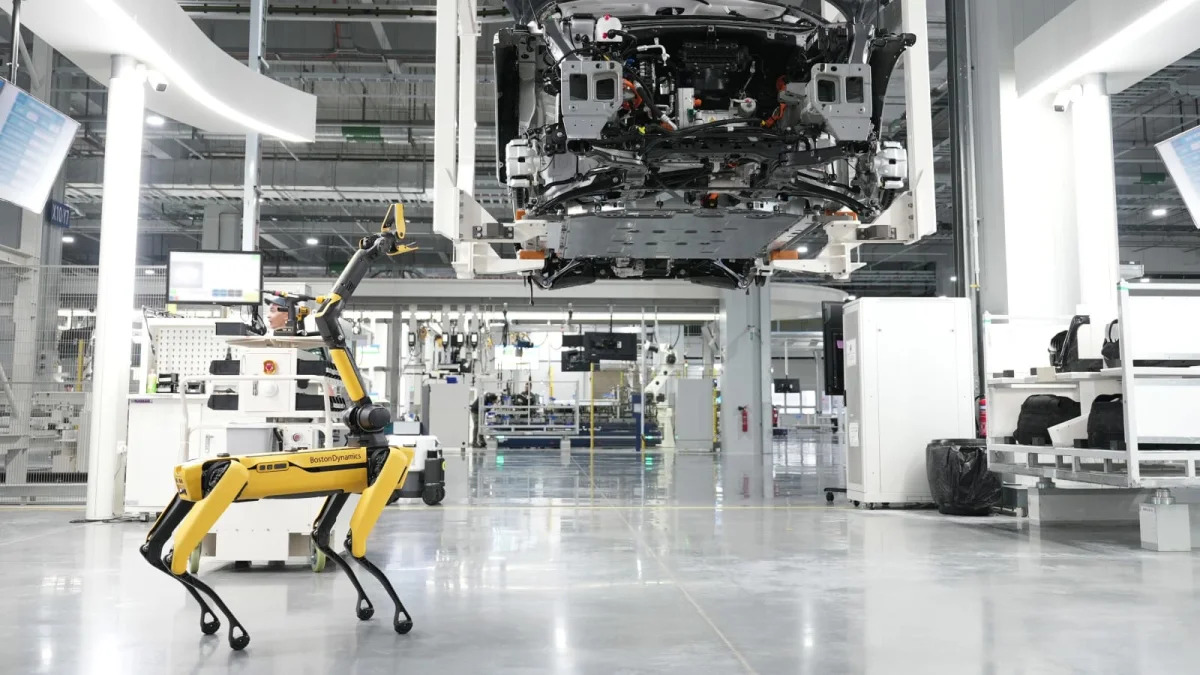
It’s kind of like rocket science
This Spot-checking photo, and photos from the smart glasses, are sent to the factory’s digital twin. When I tell you that I think I walked into a mini NASA mission control when I enter this meta factory, I am not joking. A group of engineers are surrounded by large screens on three walls, and everyone has a personal screen in front of them. Folks are leaning into their work, delving into spreadsheets and computer graphics that elevate my anxiety with a mere glance.
Scrutinizing photos from the cells is only a small part of what this control room can do. Not only can engineers see what is happening in real-time – everything from the timing of robo-pallets to any issues Tony, the maintenance robot, sees on the floor – it can evaluate the efficiency of each cell.
The meta factory breaks it all down into availability, performance and quality metrics. It knows if each cell has the required parts at the right time and if the tech in the cell is completing tasks on time and correctly. If any of these components are missing, the nerds up here can drill down into the data and find out why.
The digital twin can also run simulations to plan for future production goals. Right now, the factory only produces 20 cars a day, but Hyundai says it has the capacity for 30,000 a year. In order to effectively quadruple its current output, then, the meta factory can look at all the logistics and figure out how many robots need to be deployed and what happens if any single element is changed.
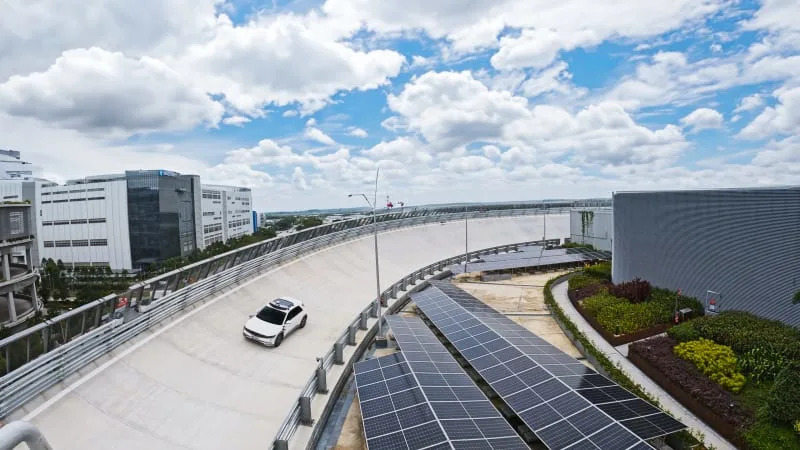
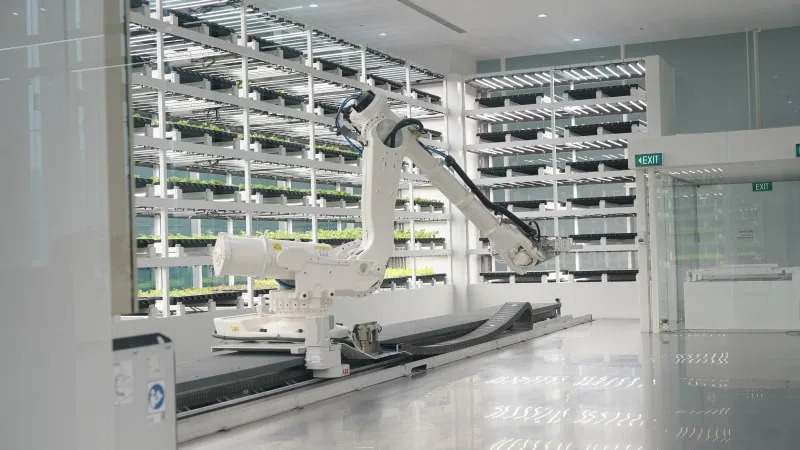
Eat your veggies
There is more to the HMGICS than just robots and a space-age data room. Testing of the Ioniq 5 is done on the rooftop track. Encircling a garden and surrounded by solar panels, the Sky Track is 618 meters long and 28 meters above the ground. Hyundai says the maximum speed is 83 kilometers per hour, but my driver pushes it a bit quicker and I get a little queasy going through the banked turns. This is not what I expected when I agreed to a factory tour.
There are even two hydroponic farms on site. Hyundai says it’s to demonstrate that its technology can enable everything from cars to food. Inside the 5-meter-tall structure in the lobby is a robotic arm that looks very similar to what is building the cars upstairs. Here it’s just harvesting leafy green veggies. Currently the yield goes to a tasting room or a local food bank, but the veggies will also be served at an in-house restaurant set to open next year.
Oh, and you don’t need to be an actual Hyundai customer to enjoy the Sky Track and veggie tasting room. These parts of HMGICS are open to the public – and free – as long as you have a reservation. That’s good news to the folks of Singapore, as vehicles are taxed at over S$95,000 ($71,000 U.S.), putting cars out of reach for many families.
But really, what is the point of this fancy-pants factory? Hyundai wouldn’t tell me just how much it has spent on the HMGICS, but it has to be in the tens of billions of dollars. For that kind of investment, Hyundai is getting closer to its customers, albeit those with plenty of cash in the bank for taxes, while experimenting with new manufacturing processes. The company hopes to replicate this factory in other markets, but there are no hard and fast plans yet. One thing is for sure: that Spot robot will be haunting my dreams for weeks to come.
Related video:



